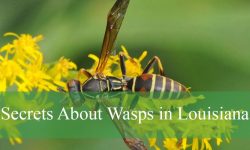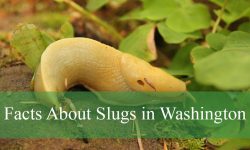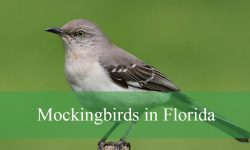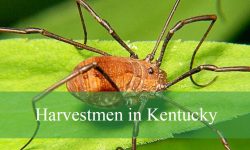High above the rugged peaks of the Rockies, where the wind howls through pine and aspen, a dark silhouette circles effortlessly against the blue. Its wings stretch wide, feathers fanned, tail flashing rust-red in the sun. With a sudden cry — sharp, piercing, and ancient — it dives toward the valley below. This is the hawk, master of the Colorado sky.
For centuries, these raptors have ruled the mountain thermals and open plains of the Centennial State. They are hunters, guardians, and symbols of freedom. Yet despite their visibility, few people truly understand their lives — how they hunt, migrate, and adapt to the thin air of the high Rockies.
This is the hidden world of the hawks in Colorado, where survival is written in the language of the wind and every glide tells a story older than the mountains themselves.
Meet the Hawks of Colorado
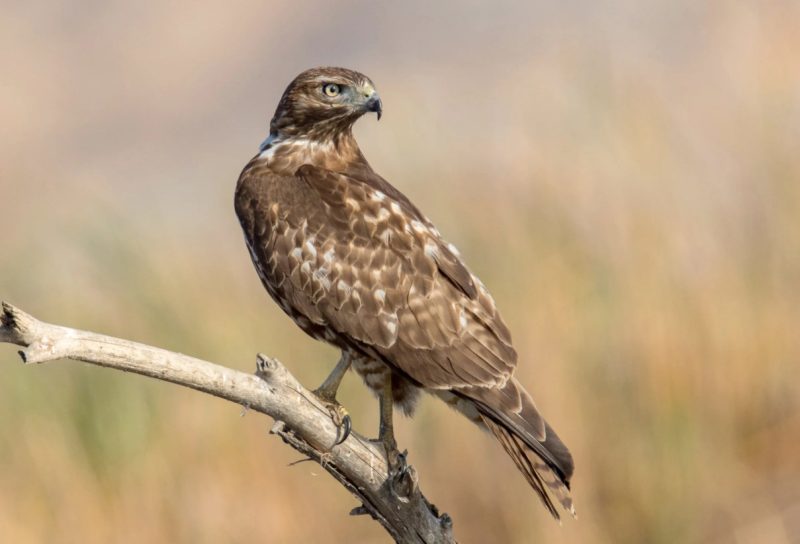
A Land of Raptors
Colorado is home to more than a dozen hawk species, each uniquely adapted to its corner of the state. From open prairies to alpine slopes, these birds embody the spirit of the West.
The most common and iconic include:
-
Red-tailed Hawk (Buteo jamaicensis) – The state’s most widespread raptor, easily identified by its broad wings and brick-red tail.
-
Swainson’s Hawk (Buteo swainsoni) – A long-distance migrant traveling from Argentina to Colorado each spring.
-
Rough-legged Hawk (Buteo lagopus) – A winter visitor from the Arctic tundra, with feathered legs for warmth.
-
Ferruginous Hawk (Buteo regalis) – The largest North American hawk, found on Colorado’s open grasslands and foothills.
-
Cooper’s Hawk (Accipiter cooperii) – A forest-dwelling predator skilled at ambush hunting among trees.
-
Sharp-shinned Hawk (Accipiter striatus) – Small, fast, and agile, often seen darting through mountain forests in pursuit of songbirds.
Each species represents a different strategy for survival in Colorado’s complex geography — from snow-swept ridges to sunlit canyons.
The Red-Tailed Hawk: The Mountain Sentinel
No bird is more synonymous with the hawks in Colorado than the red-tailed hawk. Its haunting call — a descending scream — is used in nearly every Hollywood movie to represent “the eagle’s cry.”
Red-tailed hawks are year-round residents in Colorado, nesting on cliffs, power poles, and old pines. Their wide wings allow them to soar for hours, scanning valleys for rabbits, prairie dogs, and snakes.
In the mountain foothills, these hawks are territorial and loyal to their nesting sites, returning year after year to the same ridge or canyon. They are symbols of stability in a landscape defined by change.
Their adaptability and strength make them the perfect emblem for the wild heart of the Rockies.
Swainson’s Hawk: The Great Traveler
Few animals embody migration’s endurance like the Swainson’s hawk. Each year, these birds fly nearly 6,000 miles from the pampas of Argentina to Colorado’s grasslands — one of the longest migrations of any raptor in the world.
Arriving in late April, they spend summer hunting grasshoppers and small mammals before returning south in September. Large flocks, known as “kettles,” spiral upward on warm air currents during migration, sometimes numbering in the thousands.
In the Colorado plains and mountain foothills, Swainson’s hawks are essential players in pest control, consuming vast numbers of insects that might otherwise devastate crops.
Their journey reminds us that the hawks in Colorado are part of a global web of movement and survival — a thread connecting continents through air and instinct.
The Ferruginous Hawk: Monarch of the Foothills
The ferruginous hawk, with its pale plumage and rust-colored shoulders, is the largest hawk in North America. Its name comes from ferrum, meaning iron, for its reddish hue.
These powerful birds prefer open country — sagebrush plains, arid valleys, and the rolling foothills that fringe Colorado’s eastern mountains. There, they hunt jackrabbits and prairie dogs with a force and precision unmatched by smaller raptors.
Often seen perched atop fence posts or boulders, the ferruginous hawk is both majestic and rare. It symbolizes the untamed vastness of Colorado’s high plains, where the horizon stretches unbroken under the hawk’s commanding gaze.
Rough-Legged Hawks: Visitors from the Frozen North
When winter grips Colorado’s high country, new raptors arrive from the Arctic tundra — the rough-legged hawks. Their feathered legs, adapted for cold climates, distinguish them from all other hawks in the region.
These seasonal migrants drift gracefully over the snow-covered foothills, scanning for voles and mice moving beneath the white crust.
Their presence reminds locals that Colorado is part of a grand migration corridor connecting polar tundra to mountain meadow — proof that even in the quiet of winter, life endures in the sky.
Anatomy and Adaptation
Designed for the Sky
The hawks in Colorado are living masterpieces of evolution — every muscle, feather, and bone crafted for flight.
Their wings vary by species: broad-winged buteos like the red-tailed hawk are built for soaring, while narrow-winged accipiters like the Cooper’s hawk excel in fast, agile pursuit through forests.
A hawk’s eyesight is among the sharpest in the animal kingdom. They can detect a rabbit from more than a mile away, perceiving ultraviolet light and motion invisible to humans.
Their talons, curved like ivory hooks, strike with enough force to kill prey instantly. Their beaks, short and razor-edged, are tools of surgical precision.
In the thin air of the Colorado mountains, these adaptations mean survival — an aerial perfection honed over millions of years.
The Language of Feathers
A hawk’s feathers are more than decoration. They’re instruments of flight, communication, and temperature control.
The spacing of feathers along their wings creates lift while minimizing drag. By adjusting each feather’s angle, hawks can hover, dive, or soar silently.
Feather colors also provide camouflage — mottled browns blending seamlessly with pine bark, cliffs, and tundra grasses. Even their tail bands and underwing patterns help them communicate species and maturity to other hawks.
Every feather is both armor and expression — a visible language written across the skies of Colorado.
Behavior and Daily Life
Masters of the Air
Few sights capture the spirit of the hawks in Colorado like the image of one soaring above mountain ridges. They ride the thermals — rising columns of warm air — to climb effortlessly thousands of feet without flapping.
From these heights, they survey entire valleys, scanning for the slightest movement. When prey is spotted, they dive in a breathtaking stoop, wings folded tight, accelerating at over 100 miles per hour before unfurling to strike.
Each hunt is a study in patience, precision, and power.
Nesting and Family Life
Hawks are devoted parents. In spring, pairs perform aerial courtship displays — spiraling together in the sky, locking talons, and tumbling through the air before building a nest high in a pine or cliff ledge.
The nest, or eyrie, is made of sticks and lined with bark, leaves, or fur. Both parents share responsibility for feeding their chicks, bringing small mammals and birds to the nest for weeks until the fledglings can fly.
For many mountain hawks, nesting success depends on prey abundance and weather. Harsh storms or drought can decimate populations, but in years of plenty, the skies teem with young raptors learning to hunt.
Each new generation ensures that the wild song of the hawk will echo through Colorado’s mountains for centuries to come.
Intelligence and Awareness
Hawks are far more intelligent than most people realize. They learn hunting routes, recognize individual humans, and adjust their strategies to environmental changes.
Studies have shown that some species even plan ambushes and communicate using distinct calls during cooperative hunts.
In Colorado’s varied terrain — from dense forests to high plateaus — this adaptability allows hawks to thrive where lesser birds might falter.
Their intelligence is not human-like, but instinct refined into awareness — a clarity that turns survival into art.
Diet and Hunting Techniques
Predators of Precision
The hawks in Colorado are opportunistic hunters, feeding on a wide range of prey depending on habitat and season.
Their menu includes:
-
Small mammals like voles, squirrels, and rabbits
-
Reptiles and snakes
-
Songbirds and pigeons
-
Large insects
-
Occasionally, carrion or fish
Each species has its preferred strategy. Red-tailed hawks soar high and swoop down in powerful dives. Cooper’s hawks rely on speed and surprise, weaving through trees to ambush smaller birds. Ferruginous hawks perch patiently on rocks or poles, scanning open fields for movement.
Every hunt is silent and sudden — a blend of instinct and calculation perfected through evolution.
Cleaning Nature’s Table
Hawks don’t just hunt; they clean. By scavenging on dead or dying animals, they prevent disease and recycle nutrients back into the ecosystem.
In this way, hawks in Colorado act as nature’s maintenance crew, ensuring the mountains remain healthy and balanced.
Their role may be silent, but its impact echoes across every layer of the food web.
Migration and Seasonal Patterns
Travelers of the Rockies
Colorado sits at the heart of the Rocky Mountain Flyway, one of North America’s great migration routes. Every fall, thousands of hawks pass through mountain corridors like the Golden Gate Canyon, Fremont Pass, and Grand Mesa.
Observers gather at “hawk watch” sites to witness this aerial migration — a breathtaking display of endurance and navigation.
Some species, like the red-tailed hawk, stay year-round, braving snow and wind. Others, like Swainson’s hawks, journey thousands of miles to wintering grounds in South America.
For these birds, migration isn’t a choice — it’s a legacy of survival carved into their DNA.
The Challenges of Migration
Migration is perilous. Hawks face storms, habitat loss, and human threats like wind turbines and power lines.
In Colorado, conservation groups like the Rocky Mountain Raptor Program and HawkWatch International monitor these journeys, tracking populations and protecting nesting areas.
Their work ensures that the hawks in Colorado continue to ride the same mountain winds that have carried them for millennia.
Hawks and Humans in Colorado
Partners in Balance
Despite occasional conflicts with ranchers or poultry farmers, hawks are overwhelmingly beneficial. They keep rodent populations in check and signal the health of ecosystems.
Birdwatchers and photographers flock to Colorado for the chance to see them — along the San Juan Mountains, the Front Range, and even Denver’s urban parks.
In this way, hawks in Colorado connect people to wildness — reminding us that even in modern landscapes, the ancient pulse of nature still beats above us.
Symbolism and Cultural Meaning
For Native American tribes of the Great Plains and Rockies, hawks have long symbolized vision, strength, and spiritual insight.
To the Ute and Arapaho, seeing a hawk often meant a message from the Creator — a sign to look beyond the obvious and trust one’s instincts.
Today, hawks remain symbols of freedom and courage — living emblems of the untamed skies that define Colorado’s identity.
Their presence in the mountains is both a biological reality and a cultural heartbeat.
Conservation and Protection
Threats to Colorado’s Hawks
Modern life has brought new challenges for the hawks in Colorado. Urban expansion reduces hunting grounds, while pesticides contaminate prey species. Power lines and vehicle collisions remain constant dangers.
Climate change also shifts migration patterns, altering food availability and nesting success.
Yet through dedicated conservation efforts, many populations have stabilized. Raptors once endangered, like the ferruginous hawk, now show signs of recovery thanks to habitat protection and public awareness.
Protecting the Sky Kings
Colorado’s commitment to raptor conservation is strong. Organizations and volunteers monitor nests, rescue injured birds, and educate communities on coexistence.
Homeowners are encouraged to avoid tree trimming during nesting season, reduce pesticide use, and maintain open fields that support prey species.
Every small action adds up — ensuring that future generations will continue to see the hawks in Colorado soaring high above the Rockies.
Surprising and Little-Known Facts About Hawks in Colorado
-
Hawks can see ultraviolet light, revealing urine trails of prey.
-
A red-tailed hawk’s grip strength can exceed 200 pounds per square inch.
-
The Swainson’s hawk migrates nearly 12,000 miles round-trip every year.
-
Hawks use thermal columns of air to gain altitude without effort.
-
They can rotate their heads nearly 180 degrees for panoramic vision.
-
Hawk chicks grow flight feathers within three weeks of hatching.
-
The ferruginous hawk can dive faster than 150 mph when hunting.
-
Pairs often mate for life and reuse the same nest annually.
-
A group of migrating hawks is called a “kettle.”
-
Many hawks in Colorado cities now nest on skyscrapers instead of cliffs.
FAQs About Hawks in Colorado Mountains
What kinds of hawks live in Colorado?
Common species include red-tailed, Swainson’s, ferruginous, rough-legged, and Cooper’s hawks.
Do hawks live in the mountains year-round?
Some species stay all year, while others migrate south during winter.
What do hawks eat?
They primarily eat small mammals, birds, reptiles, and insects.
Are hawks dangerous to pets?
Large hawks may target small pets, but such cases are rare.
Where can I see hawks in Colorado?
Try Golden Gate Canyon, Rocky Mountain National Park, or the San Luis Valley.
Do hawks mate for life?
Many species form long-term pair bonds, returning to the same nest annually.
Are hawks protected by law?
Yes. All hawks in Colorado are protected under the Migratory Bird Treaty Act.
Why do hawks scream?
Their calls mark territory, attract mates, or warn off intruders.
Do hawks have predators?
Eagles, great horned owls, and sometimes other hawks may prey on them.
How can people help protect hawks?
Avoid pesticides, report injured birds, and support local raptor rehabilitation centers.
Final Thoughts
The hawks of Colorado’s mountains are more than birds — they are living symbols of power, patience, and freedom. Their wings trace the wind that shapes the Rockies, their cries echoing through valleys carved by time.
They remind us that wildness still lives above us, that every ridge and canyon holds stories written in feathers and flight.
The truth about hawks in Colorado is this: they are not just hunters of the sky but stewards of balance — the enduring heartbeats of the mountain air. To watch one soar is to glimpse eternity in motion.

